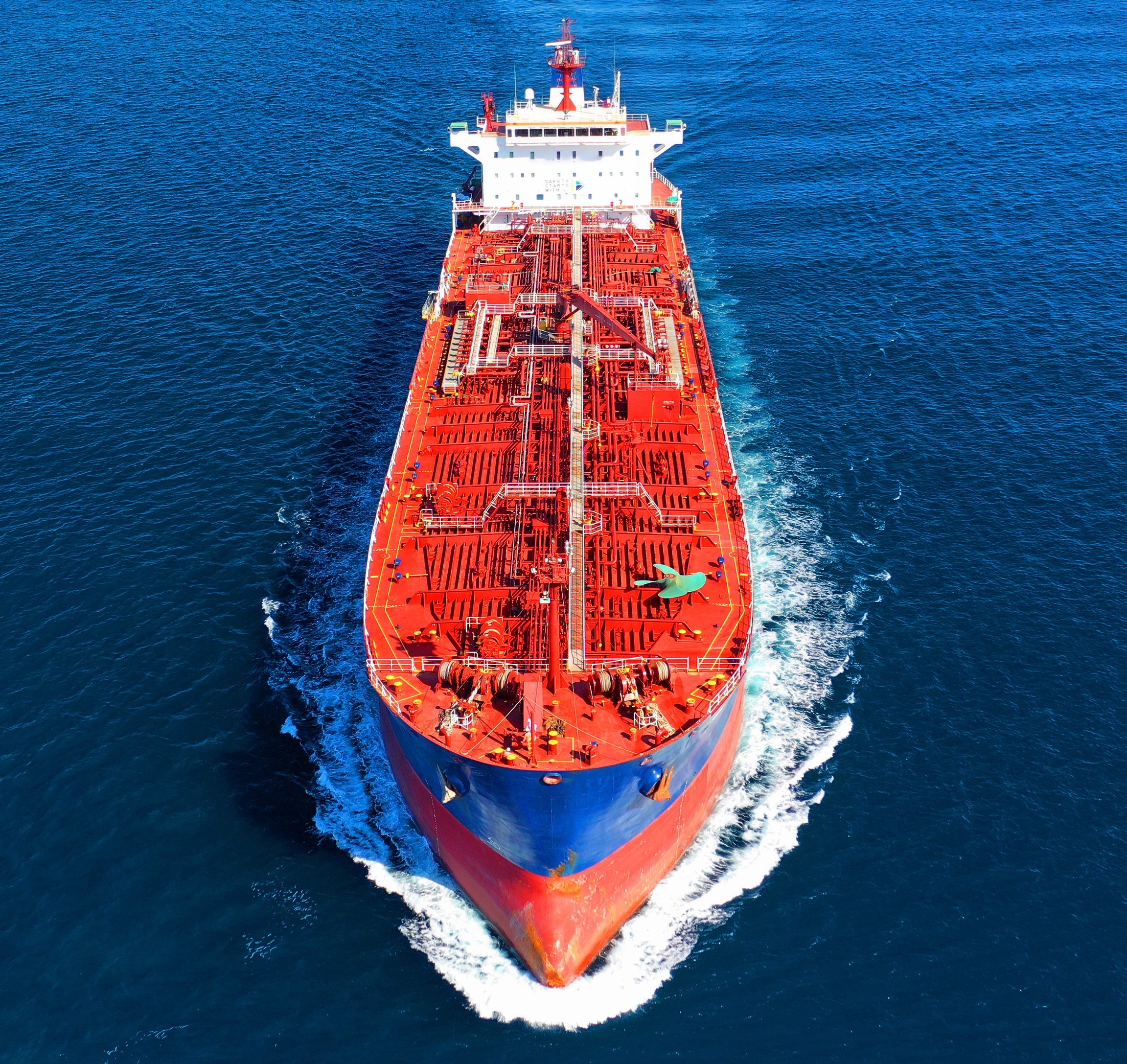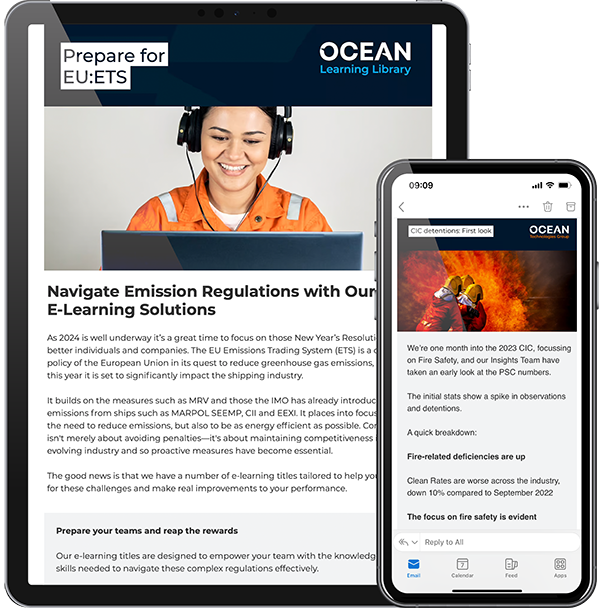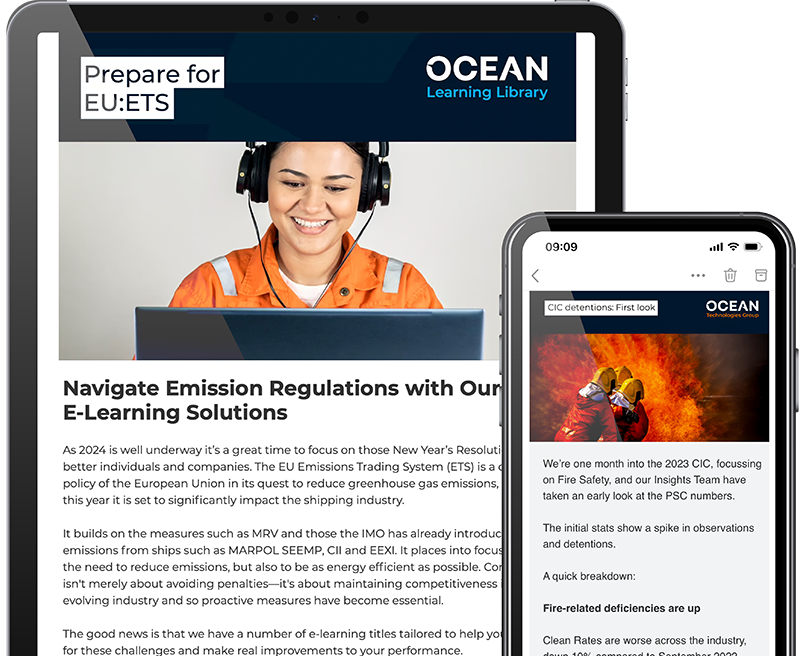Competence as a cornerstone: strengthening TMSA and DryBMS performance with a digital CMS
In a maritime industry where expectations are evolving, operations are complex, and scrutiny is increasing, competence has become a defining marker of quality. For ship managers, the ability to demonstrate competence across crew, shore staff, and contractors is no longer optional. In the Bulk and tanker sectors, competence is central to frameworks including the Tanker Management and Self-Assessment (TMSA) and the Dry Bulk Management Standard (DryBMS).
These standards don’t simply mention competence in passing, they make it integral. Whether it’s safe navigation, cargo handling, HR procedures, or incident investigation, the thread that ties it all together is having the right people, with the right capabilities, in the right roles. But it’s not enough to assume or assert competence – it must be assessed, assured, and auditable.
Competence as a requirement in TMSA and DryBMS
TMSA and DryBMS embed competence throughout their structures. TMSA Element 2, for example, focuses on shore-based personnel and explicitly states that recruitment must assess “qualifications, experience and competence” and the necessity of ”Documented interviews to assess competence”. Element 3 extends this to vessel crews, calling for structured evaluation, development pathways, and promotion-readiness assessments. To achieve Level 4, operators must demonstrate that procedures exist to evaluate competency and address gaps.
DryBMS aligns closely, requiring demonstrable competence in areas such as audit execution (Subject Area 5), HSSE training (Subject Area 8), crew recruitment and familiarisation (Subject Areas 9-11), and risk assessment leadership (Subject Area 22). Subject Area 30 goes further still, stating that investigation teams must include a “competent” methodology expert and an independent leader.
Across both frameworks, competence is directly tied to safety, vessel performance, and inspection readiness.

Evidencing competence: the strategic value of digital CMS
To meet the expectations of modern frameworks and charterers, maritime organisations need more than good intentions. They need systems that provide transparency, structure, and ongoing insight into workforce competence.
This is where digital Competency Management Systems (CMS) come into their own. By capturing data, aligning with industry standards, and supporting structured development, a digital CMS enables organisations to move beyond compliance to proactive assurance of quality. It turns competence into a managed asset, strategically embedded across operations, visible to auditors, and measurable against benchmarks.
A digital CMS transforms how competence is understood and managed. It enables operators to:
- Align role-specific competencies with industry frameworks such as the SIGTTO standard, e-ICMG, and BCAV/e-BCAV
- Track individual development journeys with verifiable, auditable records
- Proactively close skills gaps and support succession planning
- Reduce inspection risk through centralised evidence and real-time reporting
- Demonstrate a structured commitment to safety and quality to charterers
Investing in digital competency management isn’t just about compliance – it’s a clear signal to stakeholders that your organisation is serious about operational excellence.
As John Wood, Head of Manning & Marine at CLSICO commented in a recent case study:
“With the QatarEnergy tender, the fact we had the SIGTTO competencies and were using OLP, showed our commitment as a manager, that we walk the talk.”
This correlation isn’t anecdotal. There is growing evidence that structured digital CMS adoption supports improved Port State Control (PSC) outcomes and enhanced vetting results, something that increasingly influences chartering decisions. Companies managing seafarer competence with OTG had four times fewer detentions and 52% fewer deficiencies per inspection across 2024 (compared to industry averages).
Supporting frameworks, enhancing performance
Our digital CMS supports and can scale with all major industry competency frameworks, including e-ICMG, SIGTTO, and behavioural competencies such as BCAV/e-BCAV. The system provides a clear roadmap for aligning role expectations with development and assessment. It is also:
- Backed by the Ocean Learning Library
- Scalable and Customisable
- Has an expansive library of standards
- Synchronises between ship and shore
This approach not only raises standards, it ensures they are sustained across regions, vessels, and departments.

Inspection-ready, future-ready
Both TMSA and DryBMS are clear: competence is not a box to tick. It is a continuous cycle of learning, evaluation, and improvement. As audits become more data-driven, and charterers seek assurance beyond paperwork, a digital CMS becomes a differentiator. Managers that invest in competence build resilient teams, reduce incidents, and position themselves as high-performing partners.
It also makes business sense. Operators that invest in competence see better retention, fewer incidents, and stronger performance across inspections and vetting reviews. It is, quite simply, a competitive advantage.
Contact us to explore how our Competency Management System can help you align with DryBMS and TMSA, improve PSC outcomes, and reinforce your position as a quality operator.
📌 Also explore:
- OCIMF (TMSA overview)
- Webinar: Elevating Standards and Careers with Competency Management
- Blog: Unlocking the Power of Competency

Subscribe to our Newsletter
Stay connected with our guides, insights, news and more.

